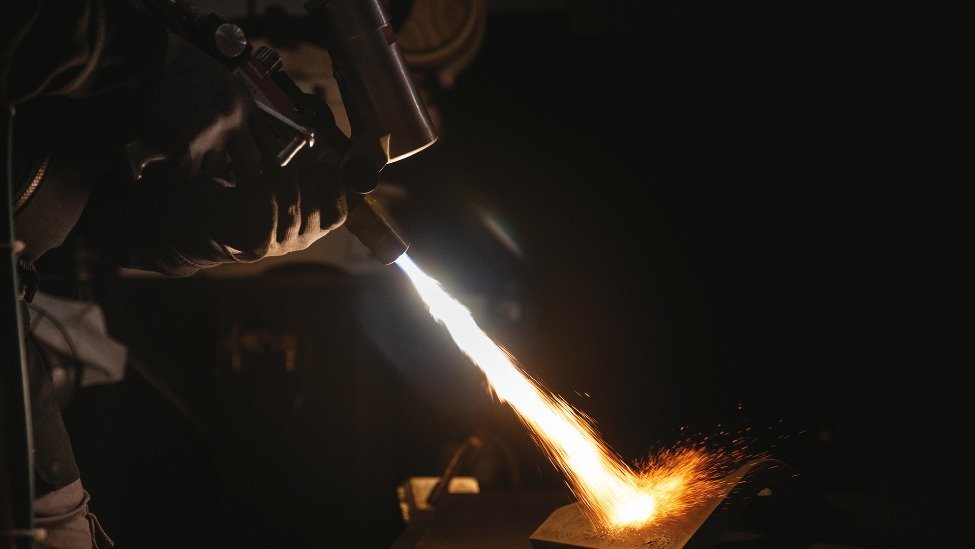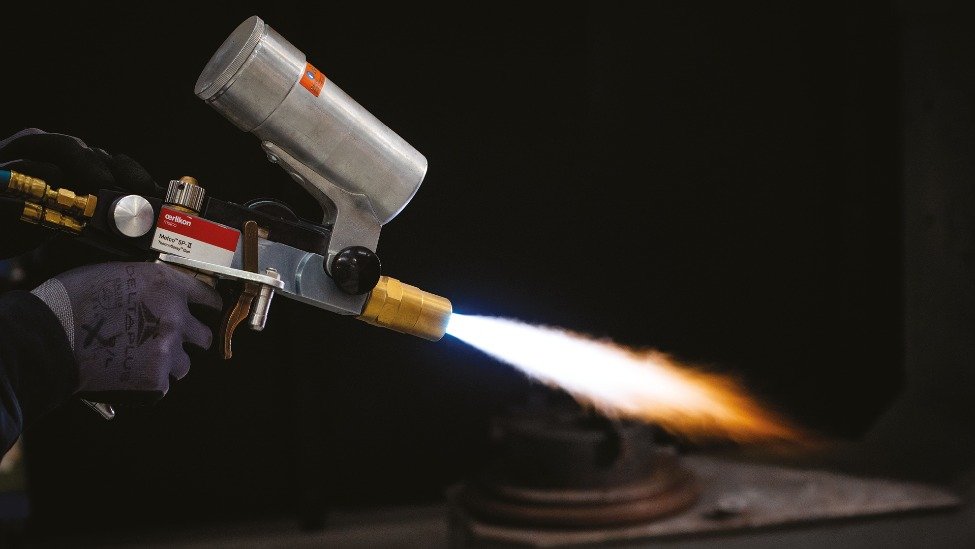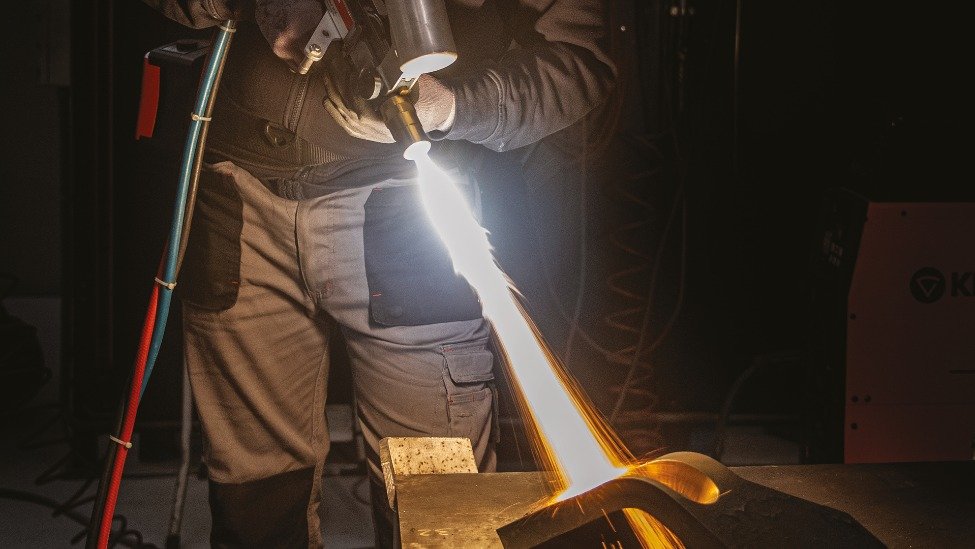
FLAME SPRAY COATING
Flame spray is a manual thermal spraying process, versatile and cost-effective, designed to apply surface coatings in order to improve wear resistance, corrosion protection, and oxidation resistance at high temperatures.
The coatings produced through this process exhibit moderate adhesion and porosity, typically between 5% and 15%. This technology is primarily used to deposit metallic materials, self-fluxing alloys, or softer materials. Its ease of use makes it ideal for manual applications or for coating complex geometries, where the portability of the equipment is essential and the setup is simple.
Flame spray coatings have a wide range of applications. They are commonly used for the repair of worn or damaged components, such as shafts, cylinders, and pumps, where a thicker and lower-cost coating is acceptable. Additionally, they are widely used for corrosion protection, employing materials such as zinc or aluminum in marine and infrastructure contexts.
To improve the properties of the applied coatings, in some cases, post-treatment can be performed, such as fusion with a torch or in an oven, especially for self-fluxing alloys. This ensures better adhesion and cohesion of the coating, as well as improved porosity.
Coatings produced tend to have a rougher surface compared to HVOF or APS coatings. However, this roughness can be advantageous, as it facilitates the adhesion of paints or additional coatings. It is also extremely useful for drag components. It is common to apply sealants or top layers to fill the porosity, thereby improving corrosion protection, especially in environments where preventing the ingress of moisture or corrosive agents is crucial.
Another advantage of flame spray is the heat input to the substrate, generally lower than processes like APS. This reduces the risk of thermal distortion or damage to heat-sensitive components, making flame spray suitable for a wide range of materials.
In conclusion, flame spray remains an important and cost-effective thermal spray method, particularly suited for low or medium-performance applications, on-site repairs, and protection against wear or corrosion. Although it may not reach the high quality of HVOF coatings or the versatility of APS, its portability, ease of use, and economic convenience make it a valid choice in many industrial sectors.




